
Tlaxcala, officially Tlaxcala de Xicohténcatl, is the capital city of the Mexican state of Tlaxcala and seat of the municipality of the same name. The city did not exist during the pre-Hispanic period but was laid out by the Spanish as a center of evangelization and governance after the Spanish conquest of the Aztec Empire. The city was designated as a diocese but eventually lost that status to Puebla as its population declined. The city still has many of its old colonial structures, including the former Franciscan monastery, and newer civic structures like the Xicohtencatl Theatre.

Cholula, is a city and district located in the metropolitan area of Puebla, Mexico. Cholula is best known for its Great Pyramid, with the Iglesia de Nuestra Señora de los Remedios sanctuary on top, as well as its numerous churches.
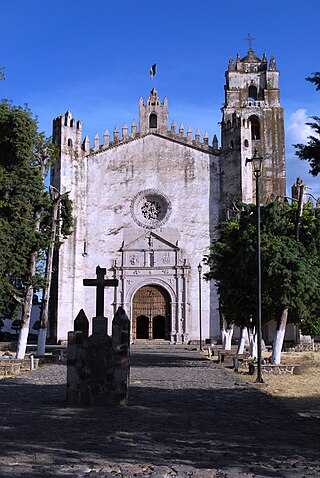
Yecapixtla is a town and municipality located in the northeast of the state of Morelos in central Mexico. Yecapixtla means, Land of men and women with sharp noses. The town is home to one of the monastery complexes associated with the Monasteries on the Slopes of Popocatépetl World Heritage Site. Yecapixtla is famously known for its tasty, high-quality beef, cecina.
Zacualpan de Amilpas is a town in the Mexican state of Morelos. The town serves as the municipal seat for the surrounding municipality, with which it shares a name. To the north is the municipality of Tetela del Volcán, to the south is the municipality of Temoac, to the east is the State of Puebla, and to the west are the municipalities of Ocuituco and Yecapixtla.

The Franciscan missions of the Sierra Gorda of Querétaro are five missions built in Mexico between 1750 and 1760. The foundation of the missions is attributed to Junípero Serra, who also founded the most important missions in California. They were declared a World Heritage Site by UNESCO in 2003.
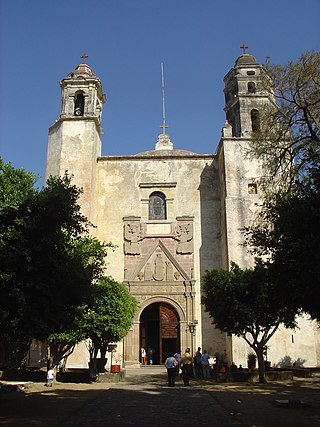
The Earliest Monasteries on the Slopes of Popocatepetl are sixteen earliest 16th-century monasteries which were built by the Augustinians, the Franciscans and the Dominicans in order to evangelize the areas south and east of the Popocatépetl volcano in central Mexico. These monasteries were recognized by the UNESCO as World Heritage Sites in 1994, because they served as the model for the early monastery and church buildings as well as evangelization efforts in New Spain and some points beyond in Latin America. These monasteries almost uniformly feature a very large atrium in front of a single nave church with a capilla abierta or open chapel. The atrium functioned as the meeting point between the indigenous peoples and the missionary friars, with mass for the newly converted held outdoors instead of within the church. This arrangement can be found repeated in other areas of Mexico as these friars continued to branch out over New Spain.

Portuguese Gothic architecture is the architectural style prevalent in Portugal in the Late Middle Ages. As in other parts of Europe, Gothic style slowly replaced Romanesque architecture in the period between the late 12th and the 13th century. Between the late 15th and early 16th century, Gothic was replaced by Renaissance architecture through an intermediate style called Manueline.
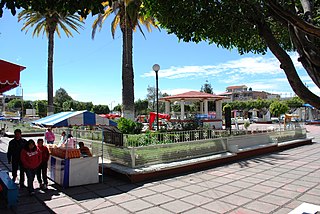
Ozumba is one of 125 municipalities in the State of Mexico. Its municipal seat is the town of Ozumba de Alzate. It is located in the southeast portion of the Valley of Mexico, 70 km southeast of Mexico City near the Mexico City-Cuautla highway. The main feature of this area is the Parish of the Immaculate Conception which began as a Franciscan monastery in the 16th century. The entrance to the cloister area contains murals related to the early evangelization efforts of this order. They include scenes such as Hernán Cortés greeting the first Franciscan missionaries in Mexico, the martyrdom of some of the first young converts to Christianity and even a scene where the monks are flogging Cortés. The church itself inside has suffered the theft of a number of its antique pieces. The name Ozumba comes from Nahuatl meaning "over the streams of water". "de Alzate" was added to the formal name in honor of the scientist José Antonio Alzate y Ramirez Santillana who was born here.
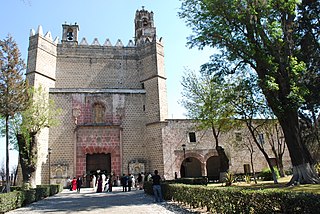
Huejotzingo is a small city and municipality located just northwest of the city of Puebla, in central Mexico. The settlement's history dates back to the pre-Hispanic period, when it was a dominion, with its capital a short distance from where the modern settlement is today. Modern Huejotzingo is located where a Franciscan monastery was founded in 1525, and in 1529, the monks moved the indigenous population of Huejotzingo to live around the monastery. Today, Huejotzingo is known for the production of alcoholic apple cider and fruit preserves, as well as its annual carnival. This carnival is distinct as it centers on the re-enactment of several historical and legendary events related to the area. The largest of these is related to the Battle of Puebla, with about 2, 000 residents representing French and Mexican forces that engage in mock battles over four days.
San Andrés Cholula is a municipality in the Mexican state of Puebla in south-eastern Mexico. It forms part of the Metropolitan area of Puebla, and as of 2011, it is the fastest-growing municipality that conforms the Metropolitan Area, partly because the presence of universities and the wealthiest neighborhoods are located in San Andrés Cholula. Along with San Pedro Cholula and Santa Isabel Cholula, it conforms the most ancient still inhabited city in the Americas, Cholula de Rivadabia.

San Pedro Cholula is a municipality in the Mexican state of Puebla and one of two municipalities which made up the city of Cholula. The city has been divided into two sections since the pre Hispanic era, when revolting Toltec-Chichimecas pushed the formerly dominant Olmec-Xicallanca to the eastern side of the city in the 13th century. The new lords called themselves Cholutecas and built a new temple to Quetzalcoatl on the San Pedro side, which eventually eclipsed the formerly prominent Great Pyramid of Cholula, now on the San Andrés side. When the Spanish arrived in the 16th century, the city of Cholula was an important religious and economic center, but the center of power was on the San Pedro side, centered on what is now the main city plaza and the San Gabriel monastery. The division of the city persisted and San Pedro remained the more dominant, with Spanish families moving onto that side and the rest of the population quickly becoming mestizo. Today, San Pedro is still more commercial and less residential than neighboring San Andrés with most of its population employed in industry, commerce and services rather than agriculture. Although Cholula's main tourist attraction, the Pyramid, is in San Andrés, San Pedro has more tourism infrastructure such as hotels, restaurants and bars.

A capilla abierta is considered to be one of the most distinct Mexican construction forms. Mostly built in the 16th century during the early colonial period, the construction was basically an apse or open presbytery containing an altar, which opened onto a large atrium or plaza. While some state that these were constructed by friars because the native peoples of that epoch were afraid to enter the dark confines of European-style churches, the more likely reasons for their construction were that they allowed the holding of Mass for enormous numbers of people and the arrangement held similarities to the teocallis or sacred precincts of pre-Hispanic temples. While open chapels can be found in other places in Spain and Peru, their systematic use in monasteries and other religious complexes, leading to a regularization of architectural elements, is only found in Mexico.

The Ex-monastery of Santiago Apóstol is located in the town of Cuilapan de Guerrero in the Mexican state of Oaxaca. The fortress-like complex is easily seen from the highway as one travels south from the capital city of Oaxaca on the road leading to Villa de Zaachila, and it is visited by both Mexican and international tourists. The complex is located on a small hill which gives it a view of much of the valley area. It is one of the most extravagant and elaborate colonial era constructions in Oaxaca, but it is often overlooked in favor of churches and monasteries located in the Mexico City area. Built of green quarried stone and river rocks, it is a quiet place where footsteps can echo in the hallways. The extravagances of the site, including the tall basilica, the elaborate baptismal font, the Gothic cloister and murals remain as national treasures. The decorative work of the monastery, especially its murals, are important because they show a systematic blending of indigenous elements into the Christian framework, done in order to support the evangelization process in the local Mixtec and Zapotec peoples. The single-naved church is used for worship but the roofless basilica and cloister are under the control of INAH, which uses many of the second-floor rooms of the cloister as workshops for restoration projects and runs a small museum with important liturgical items from the 16th century.
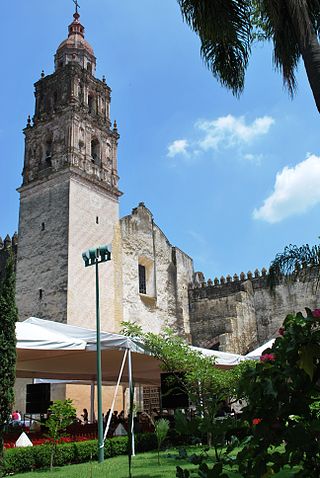
The Cuernavaca Cathedral is the Roman Catholic church of the Diocese of Cuernavaca, located in the city of Cuernavaca, Morelos, Mexico. The church and its surrounding monastery is one of the early 16th century monasteries in the vicinity of the Popocatepetl volcano inscribed as a World Heritage Site by UNESCO, built initially for evangelization efforts of indigenous people after the Spanish conquest of the Aztec Empire. By the 18th century, the church of the monastery began to function as the parish church of the city and in the late 19th century, it was elevated to the rank of a cathedral. Unlike many cathedrals in Mexico, this one does not face the city's main square, but rather is located just to the south, in its own walled compound, which it shares with a number of other structures. Unlike the other monastery structures from its time, the importance of this church provoked a number of renovation projects, the last of which occurred in 1957. This one took out the remaining older decorations of the interior and replaced them with simple modern ones. This renovation work also uncovered a 17th-century mural that covers 400 square metres (4,300 sq ft) of the interior walls and narrates the story of Philip of Jesus and twenty three other missionaries who were crucified in Japan.
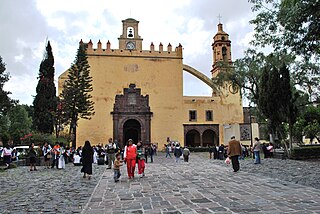
San Bernardino de Siena Church is the parish church of the borough of Xochimilco in Mexico City. The church and former monastery complex was built in the 16th century over a former pre-Hispanic temple as part of evangelization efforts after the Spanish conquest of the Aztec Empire. Since its construction, it has been the center of much of Xochimilco’s history and social life, including ceremonies related to is famous image of the Child Jesus called the Niñopa. The interior of the church contains a rare 16th-century altarpiece in Plateresque style with no columns or other supports. The only other altarpiece like it is in Huejotzingo, Puebla.

Los Volcanes Biosphere Reserve is a UNESCO Biosphere Reserve located within the Trans-Mexican Volcanic Belt of south-central Mexico. The 171,774.4 hectares (663.225 sq mi) reserve surrounds the volcanoes of Popocatépetl and Ixtaccíhuatl and marks the biogeographical boundary between the Nearctic and Neotropical realms. The reserve is managed by Iztaccíhuatl Popocatépetl Zoquiapan National Park.

The Church and Convent of San Nicolás de Tolentino is the Catholic church and parish house of the people of Actopan. It has always belonged to the Diocese of Tulancingo in Mexico. This church is located in the center of city. This colonial building is a monument of great architectural importance which has lasted until today in the State of Hidalgo.

Indochristian art, is a type of Latin American art that combines European colonial influences with Indigenous artistic styles and traditions.

Church of San Francisco Acatepec is a colonial religious building, characteristic of the Mexican Baroque architecture, especially recognized for its facade of Talavera mosaics combined with red brick. It is located in the town of San Francisco Acatepec in San Andrés Cholula, Metropolitan area of Puebla, in the state of Puebla, Mexico, and it was one of the first churches founded in the region.
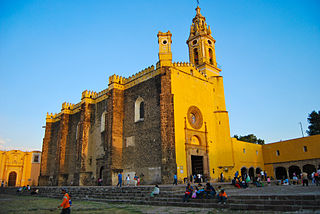
The San Gabriel Franciscan Convent or San Gabriel Friary is a church and friary in Cholula, Metropolitan area of Puebla City, Mexico.






















